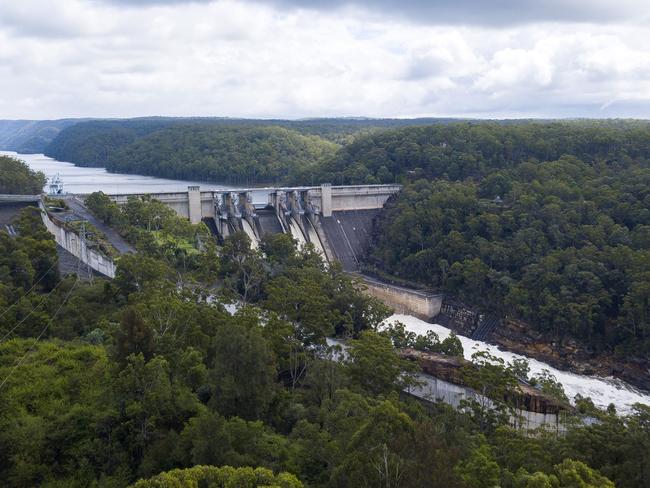Revealed: The whopping flood cost of inaction on raising Warragamba Dam
There are 130 million reasons NSW can’t afford to do nothing about Warragamba Dam, leaked documents show. The annual estimated flood damage bill is eye-watering.
NSW
Don't miss out on the headlines from NSW. Followed categories will be added to My News.
If the Warragamba Dam wall is not raised, residents and businesses will be footing a $130m flood damage bill in 20 years time, government documents reveal.
An internal briefing made by Infrastructure NSW, and seen by The Daily Telegraph, has revealed the cost of mitigating flood risk in the devastated Hawkesbury-Nepean Valley.
The modelling looks at the average direct annual residential and commercial damage caused by floods in the year 2041.
The eye-watering figures are still conservative guesses because they do not factor in climate change.
If the dam wall is raised by 14m the bill would come to $30m as opposed to $130m if the dam remains at existing levels.

Another option is to bring down the full supply level by 5m, which could lead to $100m a year in damages, or by 12m, which would bring that down to a little over $60m.
Buying back all dwellings built below the 1 in 100 flood risk level would cost $70m a year and building no new dwellings below 1 in 500 year flood risk would add up to $120m.
Centre for Western Sydney director Andy Marks said “a whole of government” approach was needed for flood management.
“It’s encouraging that planning is drawing on data and evidence. That is vitally important.
: The 1 in 100 measures that we relied on are no longer applicable, climate change is happening at such an accelerated level,” he said.
Prof Marks said alternatives to water storage, including expanding the desalination plant, should also be considered.

Resources management expert Professor Jennifer McKay said all options came with risks.
“They all have costs and they all have risks as well. You can’t just continue to raise dams. And if you do spend a lot of money raising the dam, everybody thinks the problem is solved,” she said.
Prof McKay said reducing the full supply level would only work if there was a “behavioural change” in the community to reliably use less water.
“Demand management of users so that the dam doesn’t have to be kept as full would be an option but that requires behavioural change. If the water supply authority managed to persuade people to reliable use less then they could manage the dam differently.”
Prof McKay said buy backs were a “utopian ideal” but backed a moratorium on building any homes under the 1 in 500 flood level.
“It is a utopian ideal and we should certainly not be allowing any more development in those zones. 1 in 500 moratorium that should be national policies.”
Western Sydney Minister Stuart Ayres said raising the dam wall was the best option for flood mitigation.
“If you want real flood mitigation you have to hold a large volume of water behind the dam during flood events,” he said.
“Ultimately this is about where you temporarily hold water, behind the higher wall or in peoples living rooms and businesses? Surely we have to put people first.”
Mr Ayres said additional measures will not lower flood peaks.
“Additional measures like enhanced flood evacuation routes and more planning restrictions will not lower the flood peaks in areas already subject to flooding,” he said.
“We already need to augment Sydney’s drinking water supply to support our increasing population so the idea of dramatically reducing our drinking water supply for flood mitigation sounds like madness to me.”

Western Sydney University Senior Lecturer Ian Wright said people have forgotten the major flood risk in the region because of a 30-year period with no floods.
“This is an area of Australia where there is the greatest loss of life for a civil disaster in floods. We forgot that there is a major flood risk,” he said.
Mr Wright said evacuation routes should also be prioritised in flood management.
“Before anything else we need to sort out those flood evacuation routes.”
He also supported the ban on dwellings below 1 in 500 flood levels.
“There should be no real estate development below that level at the moment.”





